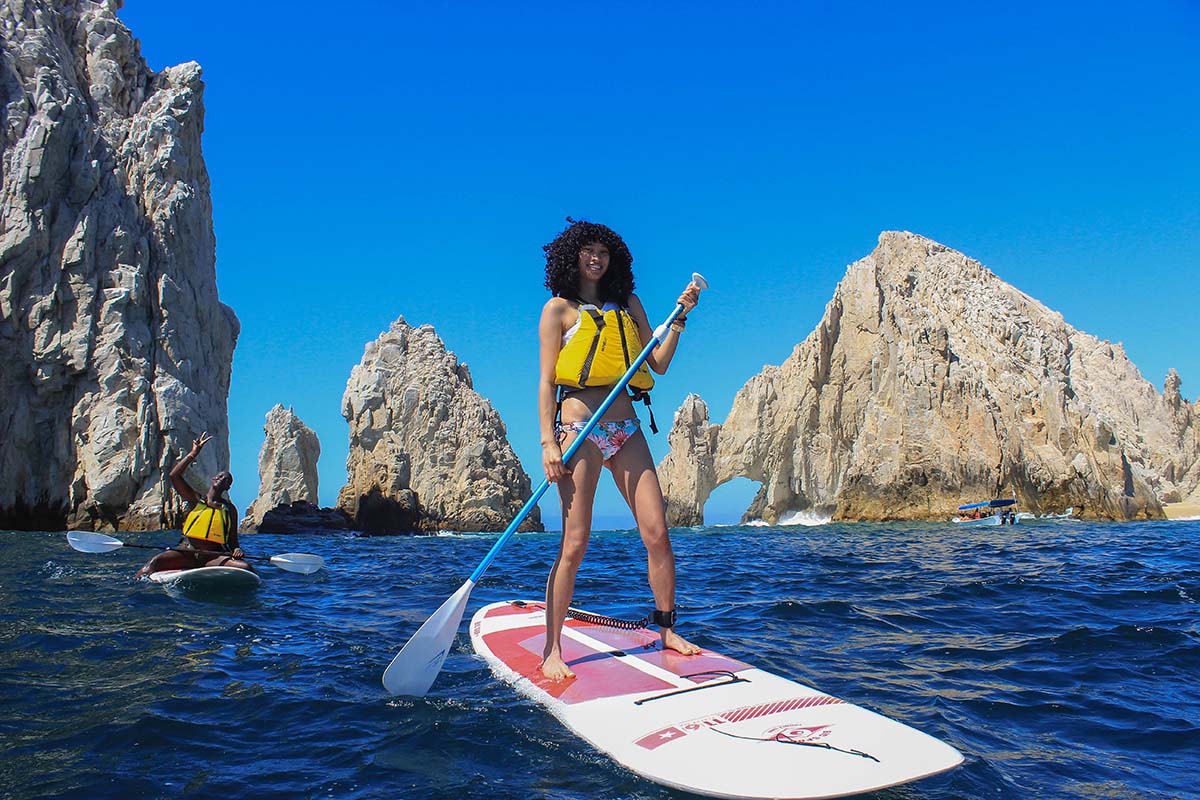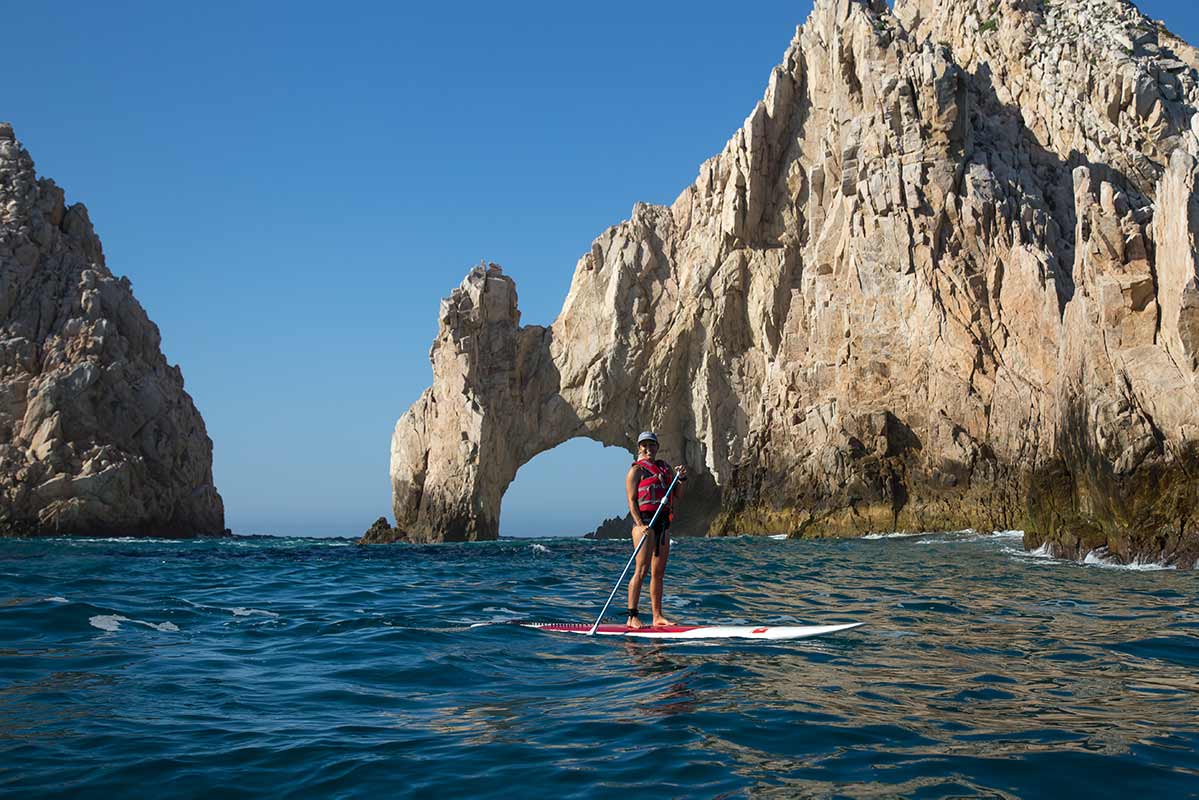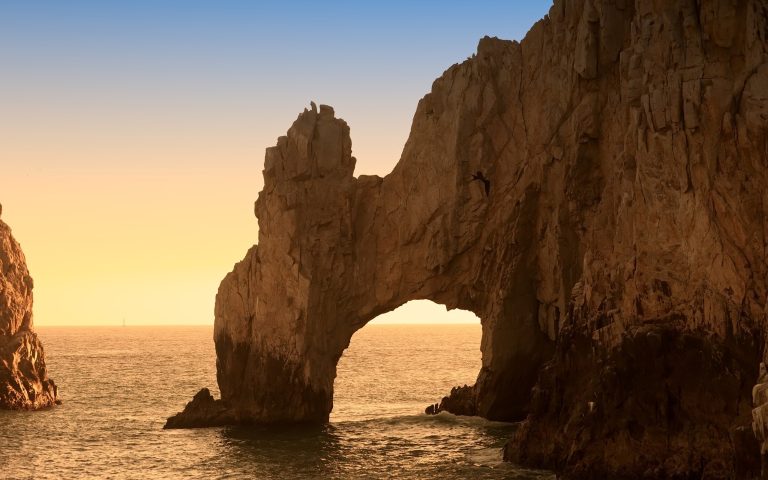
The Arch of Cabo San Lucas: Complete 2025 Visitor's Guide
The Arch of Cabo San Lucas, known locally as “El Arco,” stands as one of Mexico’s most iconic natural landmarks. This magnificent granite rock formation marks the precise point where the Sea of Cortez meets the Pacific Ocean, creating a breathtaking spectacle that draws thousands of visitors annually to Los Cabos.
What is The Arch of Cabo San Lucas?
Geological Formation and History. Formed over millions of years through volcanic activity and erosion, The Arch represents one of Baja California’s most dramatic natural sculptures. The granite composition dates back to the Cretaceous period, with continuous wave action carving the distinctive arch shape we see today.
Cultural Significance.Local legends consider The Arch a sacred site, with ancient Pericú people believing it marked the entrance to the spirit world. Today, it symbolizes the marriage of two oceans and serves as Cabo’s most photographed landmark.
Marine Life and Ecosystem
Diverse Wildlife Encounters. The Arch’s unique location creates a rich marine environment featuring sea lion colonies on nearby rocks, migrating whales during winter months, tropical fish in surrounding waters, and various seabirds nesting in the cliffs.
Conservation Efforts. Local organizations protect The Arch’s fragile ecosystem through controlled tour access, marine protected areas, wildlife viewing guidelines, and sustainable tourism practices.
Current Protection Status.The Arch sits within protected marine areas with strict regulations governing boat proximity limits, wildlife interaction rules, and tourist capacity controls.
How Visitors Can Help.Choose eco-certified tour operators, maintain safe distance from wildlife, use reef-safe sunscreen products, and follow “leave no trace” principles.



Local Legends and Culture
The Arch of Cabo San Lucas holds profound historical significance dating back thousands of years. The area was originally inhabited by the Pericú people, an indigenous group that populated the southern Baja California peninsula for approximately 10,000 years before European contact. Archaeological evidence suggests the Pericú considered the Arch a sacred ceremonial site, believing it marked the gateway between the physical and spiritual worlds.
During the 17th and 18th centuries, the sheltered coves around The Arch became notorious hideouts for English and Dutch pirates, including Thomas Cavendish and Woodes Rogers. These buccaneers preyed on Spanish treasure ships, using the natural camouflage of the rock formations to ambush vessels. Spanish authorities eventually established watchtowers along the coast to monitor pirate activity.
Romantic Mythology.The Arch features prominently in local love stories, often called “The Kissing Rocks” by guides who point out how the formation resembles natural sculptures with symbolic meaning.
Artistic Inspiration.This natural monument has inspired numerous paintings and photographs, local artisan crafts, literary works, and cultural festivals. The Arch of Cabo San Lucas remains more than just a rock formation—it’s a symbol of nature’s artistry, a testament to geological time, and a gateway to adventure. Whether you’re witnessing your first sunset through its curve or returning for another visit, this natural wonder continues to captivate all who experience it with its timeless beauty and majestic presence.
Iconic Shot Locations
Lover’s Beach perspective
Pacific Ocean viewpoint
Sunset silhouette position
Close-up from water level
Divorce Beach angle
Optimal Camera Settings. Wide-angle lens recommended for landscape shots, medium aperture range for optimal sharpness, lower ISO settings for daylight conditions, and polarizing filter essential for reducing water glare.

Frequently Asked Questions
Can you walk to The Arch of Cabo San Lucas?
No, The Arch is only accessible by water due to its location at land’s end. Visitors must take boats or kayaks from nearby beaches.
What is the best time of day to visit The Arch?
Early morning offers calm waters and soft lighting, while sunset tours provide spectacular colors and cooler temperatures.
Are there swimming opportunities near The Arch?
Yes, our tours stop at nearby beaches for swimming and snorkeling, though visitors should always check current conditions and follow safety guidelines.
Plan Your Tours with True Baja
The Arch has witnessed dramatic cultural transformations—from indigenous sacred site to pirate refuge, from whaling station to world-class tourist destination. Local oral traditions maintain that the rock formation represents two sea giants frozen in eternal embrace, a legend passed down through generations of fishing and local communities. Let us be your guidiance. Book your trip with us
